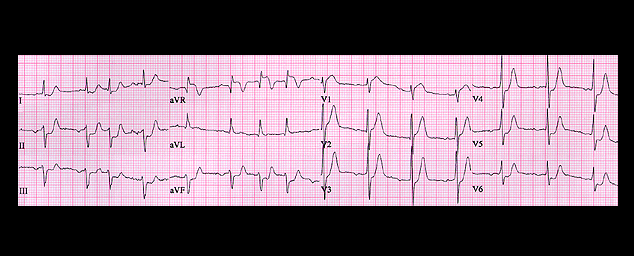
This tracing is from the same patient, recorded shortly after electrical defibrillation. There is now an ectopic atrial rhythm with atrial premature beats. The ST segment is depressed in leads I.II, III, aVF and V3-V6, and elevated in leads aVR and V1, and there is slight peaking of the T waves in leads V2-V6. These ECG changes are consistent with diffuse acute sub-endocardial ischemia. and could be due to a lesion in the left main coronary artery, or in the proximal portion of the left anterior descending coronary artery (LAD),or to severe 3-vessel disease sometimes referred to as a "left main equivalent" The coronary angiogram in this patient revealed a 95% occlusion of the proximal LAD.
